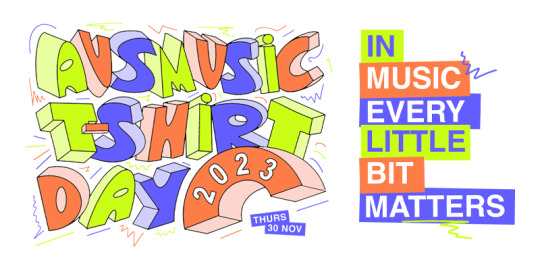#supportacts
Explore tagged Tumblr posts
Text
Rain 🌧️💧
#sleep token#vessel#sleeptokenrituals#melbourne#rain down on me#rain#rodlaverarena#bringmethehorizon2024#supportact#sleeptokenworship#sleep token lore#sleep token band#tmbte
10 notes
·
View notes
Text
No More Sorrow - Trettmann in Stuttgart 15.12.2024

Trettmann machte am Sonntag Abend einen No More Sorrow Tourstop in der Stuttgarter Hanns-Martin Schleyerhalle. Bereits seit dann einem Jahr haben wir uns auf diesen Abend gefreut, denn eigenltich war das Konzert für den 28. Januar 2024 angesetzt, wurde ja aber aus den bekannten Gründen auf Ende des Jahres verschoben. Aber wie sagt man so schön: Vorfreude ist die schönste Freude. Und so beenden wir das Jahr 2024 mit Trettmann, als mit ihm hinein zu starten. Auch heute war wie bereits gestern bei Deichkind ganz schön viel los im Hallenduo Schleyerhalle / Porschearena aufgrund einer Paralellveranstaltung nebenan. Außerdem hatte Trettmann bereits im Vorveld angekündtigt, sich nächstes Jahr eine Pause zu nehmen und dass es somit keine großen Tour oder Festivalshows geben wird. Das nahmen sich die Fans aus der Landeshauptstadt zu Herzen, immerhin waren für Stuttgart die Tickets auch langsam knapp geworden. Als Support hatte Trettmann die Jünge Künstlerin LUNA mit in Stuttgart am Start, die um Punkt 20:00 Uhr die Bühne betrat. LUNA ist keine Unbekannte, immerhin hat sie auf dem Tritten Teil der Your Love Is King EP mit Haus aus Zink einen gemeinsamen Song mit Trettmann. Bei Ihrem halbstündigen Set groovte die 22-Jährige die Stuttgarter auf den Mainact ein. Beim Set durfte natürich nicht die erste Singleauskopplung Verlierer aus dem Jahr 2022 fehlen, welche es damals sogar bis auf Platz 3 der Albumcharts schaffte, mittlerweile Goldstatus hat und von den Stuttgartern Textsicher mitgesungen wurde. Der Song und TikTok verhalfen Luna den Sprung in die Musikwelt, entsprechend wurde der Song an diesem Abend auch gefeiert. Nach knapp einer halben Stunde räumen Luna die Bühne.

Luna © About Musïc | Jasmin Zekl Um 20:50 Uhr wurde die Halle dann endlich wieder Dunkel und Trettmann kam zu So Lange auf die Bühne. Das Bühnenbild war Typisch Trettmann recht schlicht gehalten. Mit einer Begegbaren hohen Metallkonstruktion auf der Trettmann die ersten beiden Songs performte und einer riesen Leinwänden im Hintergrund. Zusätzlich war die Metallempore mit LED ausgestattet und fungierte somit zusätzlich ebenfalls als Bildschirm und Bildelement - somit spielte diese eine Ausschlaggebende Rolle beim Konzert machte die Bühne sehr wandelbar und raffiniert. Die untelegungen waren meistens Schlicht und in Schwarz-Weiß gehalten. Trettmann kommt - wie man ihn kennt - mit Kopfbedeckung und Sonnenbrille im lässigen Outfit auf die Bühne und die Schleyerhalle empfängt ihn euphorisch und unterstützten ihn Textsicher von Anfang an. Nach den ersten beiden Songs findet Trettmann zu Woanders dann den Weg nach unten an den Bühnenrand.

Trettmann © About Musïc | Jasmin Zekl Die gesangliche Unterstüzung brauchte Trettmann an diesem Abend, wie er wenig später erzählte, denn hier und da merkte man, dass er schon ein paar Tage auf Tour war und die Stimme etwas in Mitleidenschaft gezogen wurde. Dies glichen die Stuttgarter aber ohne Probleme wieder aus. Außerdem wurde Trettmann an diesem Abend von gleich 4 Tänzerinnen der Tanzgruppe The 3_4RCE unterstützt, die immer wieder vereinzelt zu Songs auf der Bühne erschienen und die Menge noch zusätzlich zum Tanzen animierten. Immer wieder erscheinen Visuals auf der Leinwand im Hintergrund, ob als Schriftzug oder Video Einspielung von den Künstlern, die eigenltlich das aktuelle Lied zusammen mit Trettmann performen. So fühlt es sich fast so an, als seien sie alle an diesem Abend mit nach Stuttgart gereist. Bei 5 Minuten, den Song auf dem Trettmann zusammen mit Henning May von Annenmaykantereit und Cro herausgebracht hat, gab es selbstverständlich ein Shoutout an den Herrn mit der Maske, der immerhin eigenltich in Stuttgart Zuhause ist. Wäre Cro selbst nicht derzeit auf Tour, hätte man vermuten können dass er als Special Guest am Start gewesen wäre.

Trettmann © About Musïc | Jasmin Zekl Bei Haus aus Zink holte Trettmann nochmal seinen Supportact LUNA mit auf die Bühne, damit sie den gemeinsamen Song mit Ihm performen konnte. Vor Nach Hause komm' richtet Trettmann ein paar Ernste und wichtige Worte an seine Fans. Trettmann möchte seine Reichweite Nutzen und hat daher zusammen mit Jassin und CLUB16 hat er auf Betterplace.org eine Aktions ins Leben gerufen, um sich gegen rechte und rassistische Gewalt einzustetzen und Demokratie zu fördern. Währenddessen wird ein QR Code eingeblendet, der zur Spendenseite führt. Mehr zur Aktion sowie wie ihr Spenden könnt findet ihr oben im Link. Weil wegschauen keine Option ist! Nach NAWW und einer Unmenge an Songs, verlässt Trettmann beim Teil von Uschi Brüning die Bühne und die Schleyerhalle Bühne verdunkelt sich. Sofort ertönen Applaus sowie Zugaberufe, und diese lässt nich lange auf sich warten. War das schon alles muss man sich nach diesem Song-Fest eigentlich nicht fragen - und es war eben nicht schon alles, denn genau mit diesem Song eröffnet Trettmann seine Zugabe, bestehend aus sechs Songs, unter anderem Gottseidank, Nur noch einen und Standard.

Trettmann © About Musïc | Jasmin Zekl Das Absolute Highlight sollte der allerletzte Song werden - auf den wir insgeheim schon den ganzen Abend gewartet haben - nämlich WHIP. Gewartet haben wir nicht nur weil der Song seit Veröffentlichung rauf und runter lief sondern natürlich auch, weil dieser von niemand geringerem als RIN gefeatured wird und der bekannterweise direkt ums Eck aufwuchs. Entsprechend groß war unsere Hoffnung auf WHIP und natürlich auf einen Gastauftritt von RIN, und unsere Wünsche wurden erhöht, denn Pünktlich zu seinem Einsatz erschien RIN mit roter Cap auf der Bühne und performte den allerletzten Song des Abends mit Trettmann und seinen Tänzerinnen. Ein grandioser Abschluss, der nach 2:20 Stunden zu Ende ging.

Trettmann © About Musïc | Jasmin Zekl Trettmann griff seiner Songauswahl tief in den Songkoffer. Natürlich sind die Aktuelle EP Your Love is King sowie das absolute Erfolgsalbum #DIY stark in der Setlist verterten, aber Tretti spielt an diesem Abend auch viel Tracks an bzw. performt seine Parts von Songs, bei denen er als feature zu Gast war, wie bei zum Beispiel 010199, Paula Hartmann oder Bonez MC. Am Ende zählen wir ganze 37 die - wenn auch nur zum Teil - angespielt wurden. Die Setlist von Stuttgart: 01. So lang 02. Knöcheltief 03. Woanders 04. Intro 05. Gekreuzte Finger 06. Für dich da 07. Bye Bye aka Delicious 08. Insomnia 09. New York 10. Was Es Braucht 11. 5 Minuten 12. Was solls 13. In meinem Leben 14. Adriano 15. Raver 16. Wie Du 17. Skyline 18. Heimlich rauchen 19. Your Love is King 20. 070 Shake 21. Hab Bock 22. In der Nacht 23. Die Anderen 24. Haus aus Zink 25. Hätten wir sein können 26. Billie Holiday 27. Atlantis 28. Prototype 29. Nach Hause komm 30. Grauer Beton 31. NAWW Encore: 32. War das schon alles 33. Gottseidank 34. Nur noch einen 35. Standard 36. Zeit steht 37. Whip Mehr von Trettmann Read the full article
0 notes
Text

Today is Ausmusic T-Shirt Day!
We love Australian music and the people who create it! Join the movement by wearing a Aussie music t-shirt and making a donation to Support Act at: https://www.ausmusictshirtday.org.au/teams/sa-rock-radio
Thanks in advance,
SA Rock Radio
#AusmusicTShirtDay #MusicMatters #ARIA #HeapsNormal #GildanBrandsAustralia #AAMI
#sarockradio
@supportact @sarockradio @aria_official @heapsnormal @gildanbrandsaustralia @aami_insurance
#sarockradio#internet radio#music#ausmusictshirtday#music matters#ARIA#heapsnormal#GildanBrandsAustralia#aami insurance
0 notes
Text
Journal Week 11 Sustaining Your Music Practice
This week's class looked at ways we can keep ourselves busy in times when we are not working on creating music to be released, and also ways of avoiding burnout and ways we can practice good health not just physically but mentally as well.
One way of creating a safety net for your mental well-being is to become part of a community that is supportive of you and are aware of any support you may need to overcome certain challenges faced when engaging with the industry. There are also organisations like SupportAct that provide services for people in times of hardship with depression, anxiety, alcoholism, and loneliness.
I myself have schizophrenia and have had for over 20 years, and am aware of how bad things can get, luckily I do have a support network of doctors, carers, and family that are aware of my current situation.
Another big factor that can contribute to mental health problems is burnout, and we need to know how to identify it if we are trying to operate while suffering burnout. It can appear as something people don't want to admit to or think, 'that would never happen to me'. But burnout affects a lot of people in the music industry. One way of handling burnout is by taking self care and doing things that you love. If you're a musician this would include taking time to do things like making music that appeals to you, even if you're the only one that likes it, or finding ways of experimenting with stuff you don't normally do, like even trying to find that new genre that no one was expecting.
Other ways of staying busy would be to go to already-established music businesses and organisations offering to work for free or volunteering your time to get a look at the different ways the industry works but from the inside. Or looking at ways of generating funds to propel your work in a forward motion by investigating which grants you can apply for, the application process, and then applying for those grants. Grants can be seasonal so the timing of the applications have to be in line with the different organisation's submission requirements to be considered for any funding. Most grant application submission dates close during the month of October.
If we are feeling burnt out or need a little help with our mental health there are apps that can be easily accessed that help you build and sustain healthy self-care habits. A couple of really good ones are Headspace, Reflectly, and Woop.
END JOURNAL WEEK 11 INDEPENDENT MUSIC PATHWAYS
0 notes
Text



Chris Hemsworth for #ausmusictshirtday
190 notes
·
View notes
Photo

👆⬅️for more pix After a few setbacks I finally got to see the mightly @truckbandmelbourne at #BendigoHotel HOLY COW !! When do I get to see them again ?? (Shot with @customslr @CanonAustralia) FOLLOW @chowie_photography @truckbandmelbourne @alexdeegandrummer @daveleslie64 @kevinhuntmusic @mark.donaldson.39@thebendigo #LifesTooShortGoSeeABand • • • • • • • • • • #TourLife #truck #SupportAct #performance #Guitar #Drums #Bass #Vocals #rockshow #backstagePass #LiveMusicConcertPhotography #SuppportLiveMusic #bestmusicshots #CustomSLR #Sponsored #gratitudeposts #grateful #SonyAlphaA6300 #Canon5DMkIV #melbournemusicscene #RockPhotographhy #livemusic #photography #thankful #grateful #gratitude #featureartists #rockmusic #originalartists (at Bendigo Hotel) https://www.instagram.com/p/CRjHnuOtw6C/?utm_medium=tumblr
#bendigohotel#lifestooshortgoseeaband#tourlife#truck#supportact#performance#guitar#drums#bass#vocals#rockshow#backstagepass#livemusicconcertphotography#suppportlivemusic#bestmusicshots#customslr#sponsored#gratitudeposts#grateful#sonyalphaa6300#canon5dmkiv#melbournemusicscene#rockphotographhy#livemusic#photography#thankful#gratitude#featureartists#rockmusic#originalartists
1 note
·
View note
Photo

It's Petey the Roadie Platypus, he's on the poster and merch for this weekends gigs at the Brass Monkey raising funds for @supportact. There's also tees and prints of Petey available wih the proceeds going to @supportact who provide financial assistance to live event industry workers. Check out @stagekings_australia for the gig deets and tickets and @isoking_au for the tees and prints. The story of Petey the Roadie Platypus Once there was a platypus called Petey and he was one of the best roadie platypus's going around. He often placed in the top ten in the annual international roadie championships (AIRC). Petey had a pretty good roadie career and travelled the world and worked with heaps of the world's biggest bands doing his roadie thing. He eventually hooked up with Kendrick, his good ole buddy from the Aussie outback and became Kendrick's number one guitar tech dude. Petey even learnt a lot of Kendricks jams and filled in for him on some gigs when Kendrick was sick as a brick. The End #mulgatheartist #supportact #platypus #platypusart #roadie #supportact #guitarart #rocknroll #australianartist (at The Brass Monkey Cronulla) https://www.instagram.com/p/CMmN7AhAKV2/?igshid=1jkxmsisints4
1 note
·
View note
Photo

Oh no @rufusttaylor...don't hit him so hard!!! - Credit pic to @ebony.lauren - Roundhay Park, Leeds, Aug 16th 2019 with @teddysphotos - Stage outfit by @acebright13 for @bunsosteelana - #JustinHawkins #TheDarkness #theactualdarkness #Rufusttaylor #singer #frontman #performer #showman #songwriter #guitarplayer #drummer #drumsticks #vicfirthsticks #vocalist #hitter #singerhunter #edsheeran #Leeds #supportact #rockstar #rocknroll #bandphotographer #stagephotographer #rockphotographer #concertphotographer #tdkjusettes (at Roundhay Park) https://www.instagram.com/p/B1REYhSIGHw/?igshid=fmud86u5x5a6
#justinhawkins#thedarkness#theactualdarkness#rufusttaylor#singer#frontman#performer#showman#songwriter#guitarplayer#drummer#drumsticks#vicfirthsticks#vocalist#hitter#singerhunter#edsheeran#leeds#supportact#rockstar#rocknroll#bandphotographer#stagephotographer#rockphotographer#concertphotographer#tdkjusettes
2 notes
·
View notes
Photo

Special Edition ‘Blue’ Timbale Sticks - Available now in our store. The blue colour was selected in support of musicians’ mental health - every purchase helps us donate each month to the great work of Support Act who support music industry workers through various initiatives. Check out their work at www.supportact.org.au @supportact Specifications: · Diameter : .440" · Length : 16" #supportact #mentalhealth #drumsticks #redsticks #red #redcymbals (at Red Cymbals) https://www.instagram.com/p/Cnx1rMUShLK/?igshid=NGJjMDIxMWI=
0 notes
Photo

Here’s a little poem I wrote when reckoning with the passage of time and the changes it brings. Many of us (particularly in the music world) have had our lives caught in limbo for a while now and that has taken quite a toll. For me at least, it has been a time of questioning - whether all the years have amounted to any legitimacy as an artist (and other assorted doubts). Such questions are particularly sharpened when staring down the throat of an empty bank account. This is a limbo of its own and one we all encounter, perhaps a little too frequently in the arts. It haunted us before the pandemic and will remain with us after. I hope there will come a time when the necessity of art-making in all capacities is broadly acknowledged in the same way we understand oxygen is needed in the air we breathe. I am unsure if our current government understands either of those concepts. As I reflect, and in light of the fact that tomorrow is #ausmusictshirtday I thought this is a good moment to acknowledge the amazing work of @supportact. They helped me out recently and they have helped many of my friends in the past. I am very grateful they exist and I hope you will wear your favourite Australian music t-shirt tomorrow in solidarity. Give them your support if you are in a position to do so: www.ausmusictshirtday.org.au So thank you @supportact, and thank you to anyone who has ever come to a show, purchased merch, streamed my music, hired me for a gig or supported my music in any way. I am immeasurably grateful ❣️ . . . #supportact #supportmusic #supportlives #amtd2021 https://www.instagram.com/p/CWaoZkWpwMc/?utm_medium=tumblr
0 notes
Text
Music workers in the arts encouraged to apply for Support Act grants
Music workers in the arts encouraged to apply for Support Act grants
Music industry charity Support Act is encouraging anyone working professionally in music across the arts and who is in financial difficulty as a result of the COVID-19 pandemic, to apply for one of their new MusicKeeper or CrewKeeper cash grants. Since announcing the creation of the new grants in March, which were made possible thanks to funding from the Australian Government through the Office…

View On WordPress
0 notes
Text

The massive nationwide celebration of Australian music, Ausmusic T-Shirt Day, is coming up on Thursday 30 November and our team needs your help!
Please join us in helping Support Act to raise funds for musicians, managers, crew and music workers who are doing it tough by wearing your Aussie music t-shirt on Thursday 30 November and making a donation to our fundraising page:
https://www.ausmusictshirtday.org.au/teams/sa-rock-radio
Thanks in advance,
SA Rock Radio
#ausmusictshirtday
@supportact @sarockradio @aria_official @heapsnormal @gildanbrandsaustralia @aami_insurance
#support act#ausmusictshirtday#sarockradio#charity event#aria_official#heapsnormal#gildan brand australia#aami_insurance
0 notes
Photo

Today is #ausmusictshirtday... A day where the Australian music community and its friends come together! If you don’t know about today then know that today is the day we raise funds for @supportact... and incredible organisation that has supported many in our industry who are in crisis (particularly right now) How can you help? Don your fave Australian Music T-Shirt and post with the above hashtag, to help raise awareness and then donate (link in bio) NOW is the time to come together... everyone needs music and shows in their world!!! PS: you can pick up this particularly tee @prinnie_stevens show THIS Sunday @marysunderground xxx #supportact #apra #triplej #artistssupportingartists #music #livemusic #liveperformance #belindajaneling #beelingevents #littlenanbybee #gettingbacktoabetterme https://www.instagram.com/p/CHzFg0Xr7FN/?igshid=1a1rzhudehtbn
#ausmusictshirtday#supportact#apra#triplej#artistssupportingartists#music#livemusic#liveperformance#belindajaneling#beelingevents#littlenanbybee#gettingbacktoabetterme
0 notes
Photo

👆⬅️ for more pix Here's a blink and you've missed it gig in between lockdown numbers ?? Again proving indeed The amazing @karlyjewell supporting the mighty @truckbandmelbourne recently at #BendigoHotel (Shot with @customslr @CanonAustralia) ☆ FOLLOW ☆ @chowie_photography @karlyjewell @truckbandmelbourne @monkeynavigator @bass.boss.beaton @mariano_marcos_ @thebendigo • • • • • • • • • • #TourLife #karlyjewel #SupportAct #performance #Guitar #Drums #Bass #Vocals #rockshow #backstagePass #LiveMusicConcertPhotography #SuppportLiveMusic #bestmusicshots #CustomSLR #Sponsored #gratitudeposts #grateful #Canon5DMkIV #melbournemusicscene #RockPhotographhy #livemusic #photography #thankful #grateful #gratitude #featureartists #rockmusic #originalartists (at Bendigo Hotel) https://www.instagram.com/p/CRgf4L3NI2m/?utm_medium=tumblr
#bendigohotel#tourlife#karlyjewel#supportact#performance#guitar#drums#bass#vocals#rockshow#backstagepass#livemusicconcertphotography#suppportlivemusic#bestmusicshots#customslr#sponsored#gratitudeposts#grateful#canon5dmkiv#melbournemusicscene#rockphotographhy#livemusic#photography#thankful#gratitude#featureartists#rockmusic#originalartists
0 notes
Photo

It's Kendrick the Shredder Koala, he's shredding on the poster and merch for this weekends gigs at the Brass Monkey raising funds for @supportact. There's also tees and prints of Kendrick available wih the proceeds going to @supportact who provide financial assistance to live event industry workers. Check out @stagekings_australia for the gig deets and tickets and @isoking_au for the tees and prints. The story of Kendrick the Shredder Koala Once there was a koala called Kendrick and when he was five he first started playing his dads guitar. He first learnt Smoke on the Water by Deep Purple and then Smells like Teen Spirit by Nirvana. He felt a real connection to the guitar and from the first time he picked up the guitar he would practice on it for a minimum of 3 hours per day without his dad telling him to go practice the guitar "because I'm paying ten dollars per month for that online course and if you don't practice you can pay for it" and in no time at all he was shredding so hard. He would put on concerts for his fam and then he was playing at the local street festival and then he got a manager and the gigs started rolling in. When Joe Satriana toured Australia he was the support act and even got to shred on a song with Joe during Joe's set. That was pretty sweet. After that he recorded heaps of albums and toured the world heaps of times and had a fabulous musical career. The End #mulgatheartist #supportact #koala #koalaart #guitar #supportact #guitarart #rocknroll #australianart #joesatriani (at The Brass Monkey Cronulla) https://www.instagram.com/p/CMkyyWRg4nW/?igshid=fjefdg46smdq
0 notes
Text
5SOS Via SupportAct on IG
#white. t shirt. sunglasses. pulling. neckline. down. this. fine. 👁️👄👁️#5sos#5 seconds of summer#luke hemmings#calum hood#michael clifford#ashton irwin#all#other ig#video#kh4f post#also more Cal flannel content#however we have somehow reacquired the red hat#you win some you lose some 🤭#anyways don't mind me I'm just going to be hyperfixating on the cute lil wave Ash keeps doing in the bg
152 notes
·
View notes